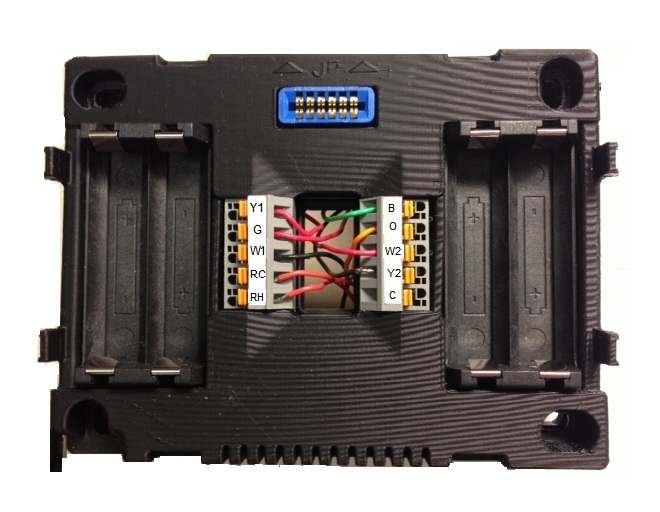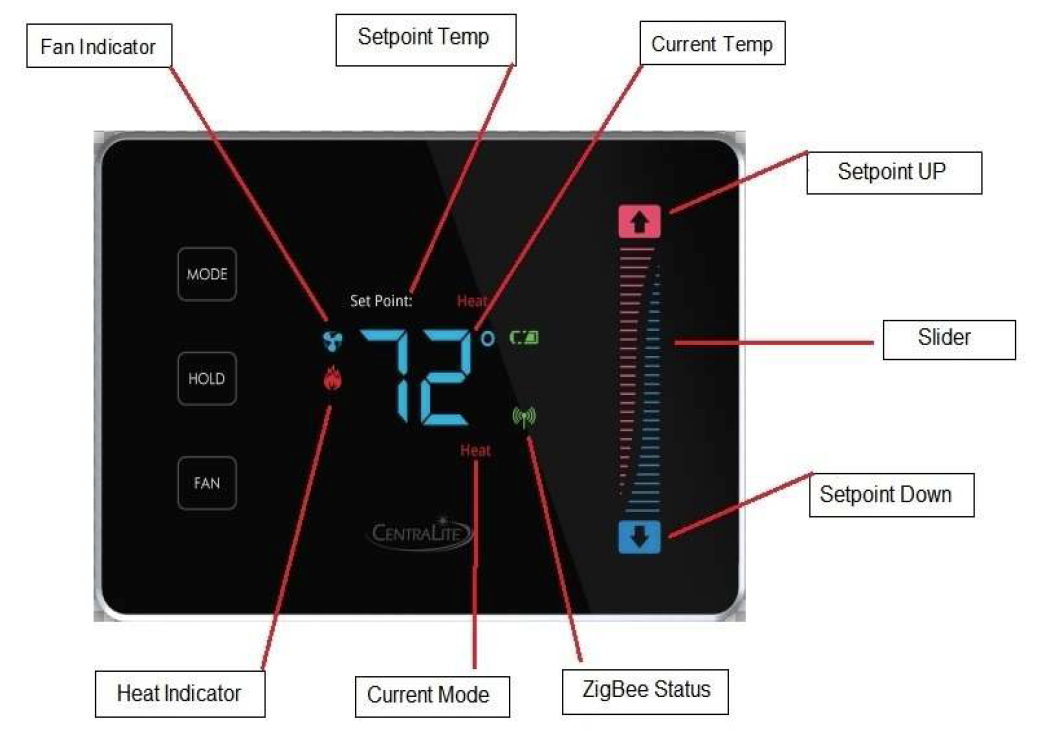Before you begin installing your thermostat, please be advised that It is always a good practice to consult the owner’s manual for your HVAC system. If necessary, consult an HVAC technician to ensure proper installation.
Locating the Thermostat
If this is to replace an existing thermostat, just use the existing thermostat location.
If this is a new install follow these suggestions:
- Locate the thermostat about 5 ft. off the floor away from direct sunlight, lamps, radios, televisions, fireplaces, hot water pipes, or other heating or cooling sources.
- Do not locate the thermostat near doors to the outside or windows.
- Do not locate the thermostat in a damp area.
- Do not locate the thermostat in an area that lacks air circulation.
Remove Existing Unit
- Switch OFF the electricity to the HVAC unit.
- Keep in mind that many thermostats use batteries as a back up source of power. To confirm the HVAC system is off, turn on the fan on the old unit. If the system does not come on, the power is off.
- Remove the cover to the existing thermostat
- Make a note of the terminal location for each wire connected to the thermostat wiring terminals.
- Wire colors are not standard so it is important to note the terminal label that each wire is connected to on the existing thermostat. It is ALWAYS a good idea to take a picture of the way your original thermostat is wired prior to removing the wires.
- While removing each wire from the existing thermostat wiring terminal, make sure to secure the wire so that it does not fall back into the wall.
- Once all wires are removed from the existing thermostat wiring terminal, remove the existing thermostat from the wall.
- Make sure to leave at least 3” of wire for each connection onto the PEARL thermostat wiring terminal.
- Remove 1/8” insulation from the end of each wire.
Installing The Thermostat
- Place each wire in the appropriate wire terminal.
- By default the PEARL thermostat comes with a wire jumper connecting the RH and RC power terminals. On most units only one power source is used and can be connected to both RH and RC. But if you have a millivolt system or other type of HVAC system it may require separate power sources for Heating and Cooling. In this case you will remove the jumper and separately power RC and RH.
- The PEARL thermostat can be powered by 4 AA batteries or by the power from the 24V off the HVAC unit if a Common(C) wire is available. Even if you use the common wire for power you should still install 4 AA batteries as a backup for the thermostat time clock.
The wiring terminal is labeled as follows:
| C | Y1 | G | W2 | W1/B | Y2/O | RC | RH | I1 | IC |
| C | Common |
| Y1 | Cool Control/Compressor |
| G | Fan |
| W2 | 2nd Stage Heat or Heat Pump auxiliary heat |
| W1/B | Heat Control/Heat Pump changeover (powered in heat mode) |
| Y2/O | 2nd Stage Cool Control/Heat pump changeover (powered in cool mode) |
| RC | Power From Cooling |
| RH | Power From Heating |
| I1 | Auxiliary Input Signal |
| IC | Auxiliary Input Common |

- Connect the wires to the terminal on the thermostat mounting plate.
- Hold the thermostat up to the wall in the desired position. Mark where the 4 holes are to be drill. Drill 4 3/16 holes for the wall anchors.
- Use the included wall anchors and screws to mount the thermostat securely onto the wall.
- Install 4 AA batteries into the battery compartment.
- Snap the outer cover onto the thermostat.
Thermostat Configuration
The PEARL thermostat is designed to auto detect whether it is connected to a Heat Pump or a Non Heat Pump once the front cover is snapped onto the base plate
NOTE: A thermostat which shows “E0” is a thermostat which has not yet been connected to a “valid” system or one which has not yet been “programmed” yet. This “E0” is an indicator that the thermostat is in a factory default state. This “EO”status can be changed to a valid status by either programming the thermostat or by hooking up the thermostat to a valid system.
- From the factory the thermostat comes configured to work with single stage Cool/Heat, Single Speed Fan systems.
- If your HVAC system is different refer to the programming section by clicking the link at the bottom of this page to configure the thermostat for your system.
- If you have separate power for RH and RC then you will need to remove the factory installed jumper between RH and RC.

Once the thermostat is powered on, the ZigBee Status indicator will begin to flash indicating that the thermostat is ready to be joined to your home automation system. Return to the activation flow to pair your thermostat.
Once you have completed the installation process, return to the activation flow to add your device to your system.